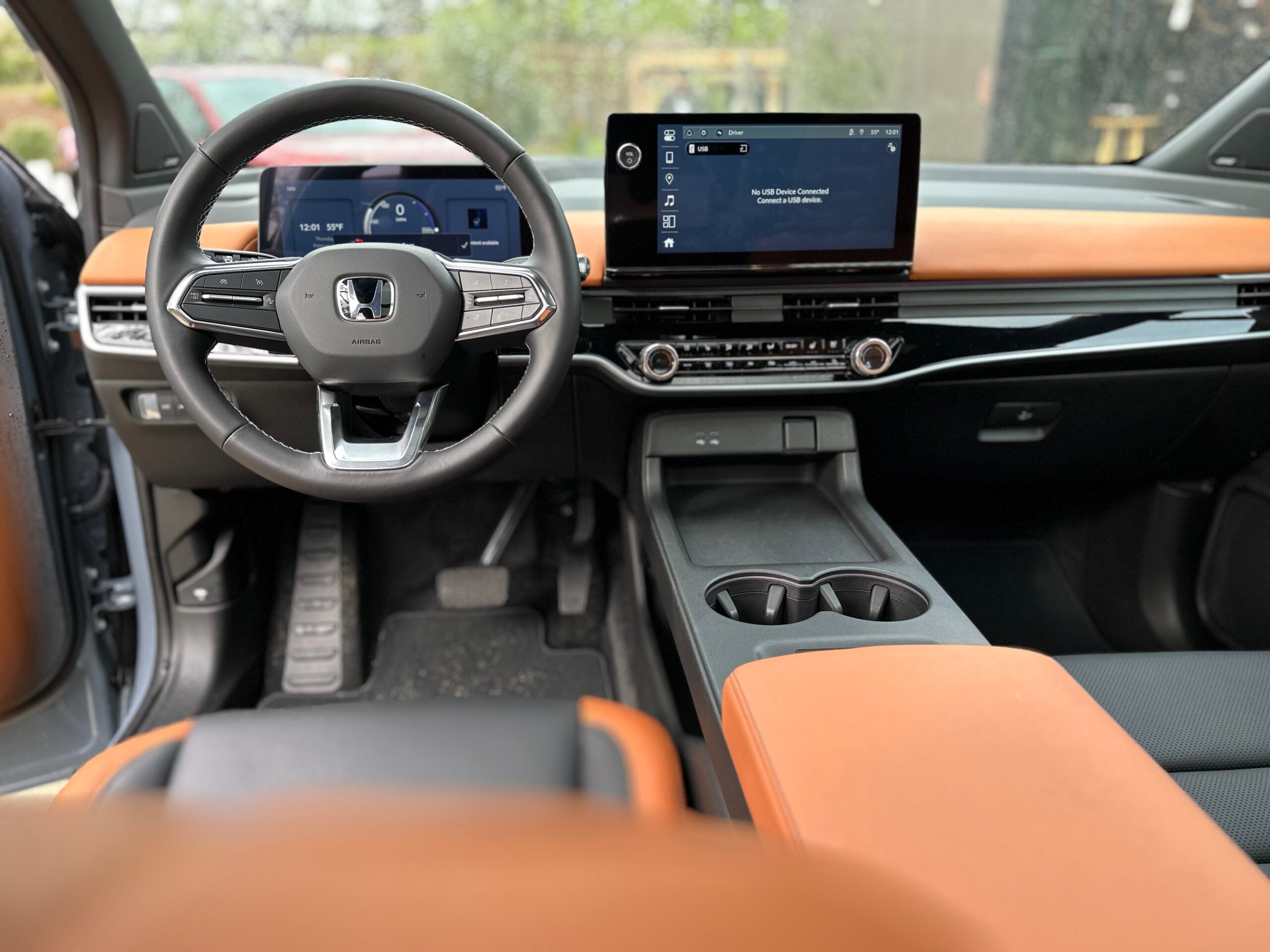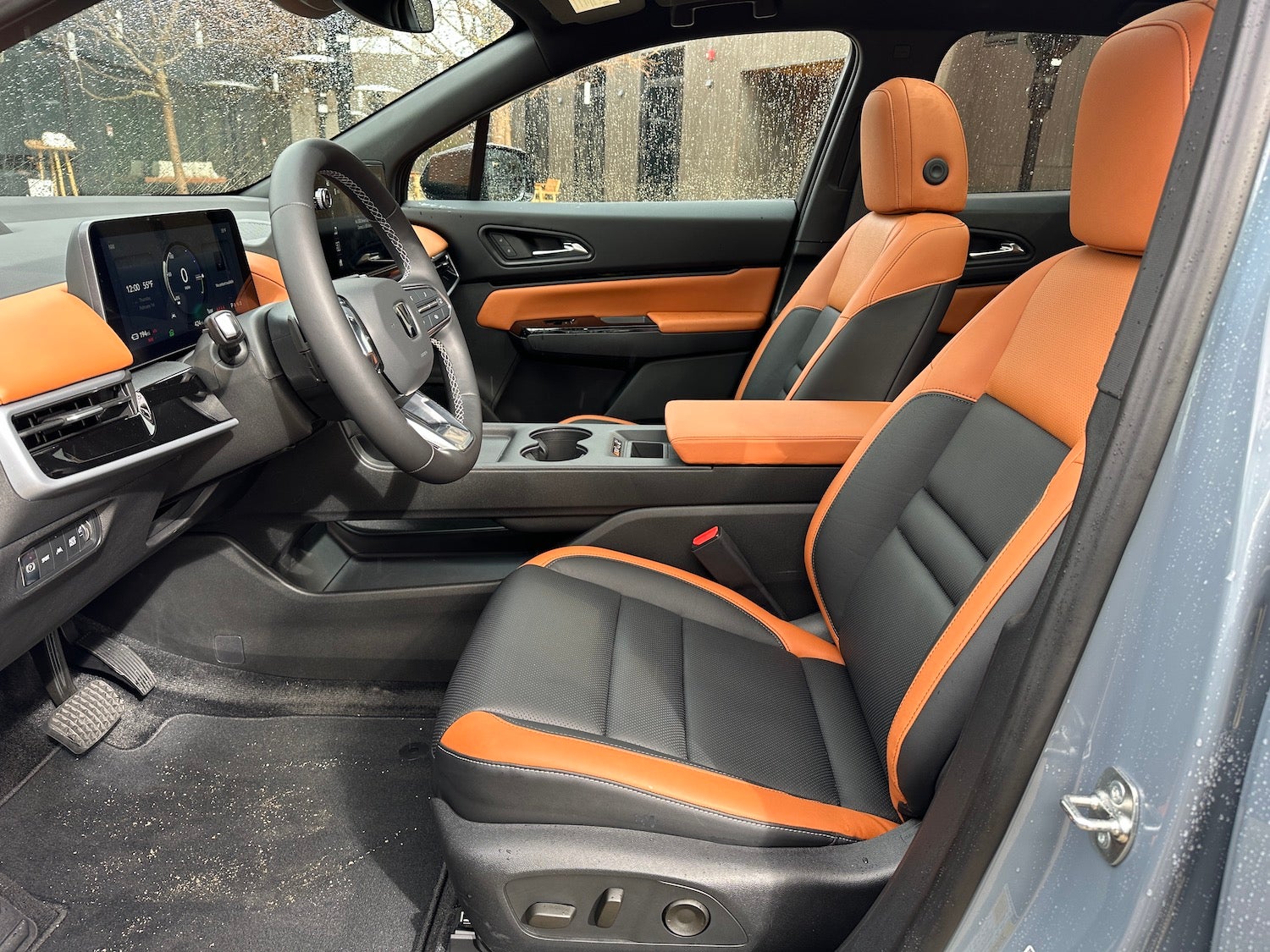Honda started developing its Prologue EV in 2020, which became an even more challenging project during the spread of COVID-19. The Japanese brand had agreed on a partnership with the American legacy automakers at General Motors, and face-to-face meetings were off the table. For the entire first year, the two companies met virtually, using video, virtual reality, and computer graphics to develop the vehicle together while halfway around the world from each other.
The fruit of this collaboration led to the Honda Prologue, the automaker’s first all-electric SUV, which arrives in dealerships next month. It’s built on GM’s Ultium battery-electric platform, also used for the GMC Hummer EV (pickup and SUV), Cadillac Lyriq, Chevrolet Blazer EV, Chevrolet Silverado EV, and BrightDrop Zevo 600 (GM’s electric delivery van).
In January, Honda announced its all-EV “0 Series,” launching in 2026. The brand showcased two concept models, Saloon and Space-Hub, at CES 2024. In 2026, Honda will introduce a model of the Honda 0 Series based on the Saloon concept in North America. In the meantime, Honda recognized that teaming up with GM and its battery base could ramp up the progress on its first EV, getting it to market that much faster.
“We delivered exactly what we wanted: speedy development, a proven platform, and that way we got something we could quickly execute,” says the Honda Prologue chief engineer John Hwang.

Blending two different company cultures
GM provided the frame, suspension, chassis, powertrain, and electrical architecture, coupled with 10 battery modules. Honda’s responsibility was what the industry calls “top hat” development–everything you see above the chassis both outside and inside. The Prologue was designed in Honda’s California studio and required the integration of GM components that attach to their floor.
[Related: All the upcoming non-Tesla EVs we’re excited about]
While testing the Prologue in Northern California, it was clear that its one-pedal driving was well-planned. The new EV features three levels of one-pedal drive modes, allowing the user to avoid moving their foot from the accelerator to the brake. Lifting up from the accelerator pedal slows the car down quickly depending on the level, and it has a nice coasting feel when the one-pedal is off. That’s ideal for highways, while a heavier one-pedal setting is better for stop-and-go traffic. This feature is carried over directly from GM, Hwang says.
“We didn’t change a thing,” Hwang told PopSci. “When we were benchmarking and setting targets, we liked how GM was executing this feature, so we said, ‘Don’t touch it. It’s not broken.’”
The Prologue’s Sport button, located somewhat inconveniently to the left of the steering wheel, may be a GM button but the outcome is programmed by Honda. Interestingly, the car uses a passive damping system and there is actually no physical transformation that makes the car feel more grounded and quicker when Sport mode is activated.
“When you press the sport button, it changes the power steering to feel sportier and heavier,” Hwang says. “The throttle mapping is also different, and the EV sound–the whoosh sound–changes. But the sound and the tip in the throttle feeling alters how you perceive the acceleration or motion. Basically, it changes how you perceive it but there is no mechanical change.”
It’s similar to using a touchscreen, Hwang explains; a sound makes you feel like you actually pushed something, but it’s really just the sound coming from the center speaker.

Plugging in the buttons and switches
Honda couldn’t just plug in its own buttons and switches because each must communicate electronically with the platform itself. Engineers from the Japanese company expressed to GM which kinds of buttons it wanted, and based on those requests, GM looked at its catalog and offered Honda options that would work. For example, GM uses toggle switches on the back of its steering wheels to control the audio system, which is not a typical Honda feature. It makes sense in the Prologue as the two put the pieces together.
Keeping some physical switches was important to Honda. The automaker says it is difficult to instantly determine whether a touch panel has been properly operated, unlike physical switches, presenting a potential risk while driving.
Hwang has been with the company for nearly three decades. While he understood the challenges that would come with working on another automaker’s platform, he relished the opportunity to learn. Engineers from Japan eventually met with counterparts in Ohio and Los Angeles in the U.S., creating a global experience.
“It was cool to collaborate in that way,” Hwang told PopSci. “It’s really interesting, because GM uses different terminology and acronyms to describe parts and the process. We would use their English when talking to them and they’d use ours when talking to us.”
Even the symbols were different: Honda uses Xs and circles on its charts, while GM uses checkmarks.
“For me personally, I enjoyed the chance to do something different and new,” Hwang told PopSci. “You get to see how another company works, so that’s always interesting and you learn from that. Every company does things very differently and you discover different perspectives. The ingredients might be the same, but the recipe or cooking method might be different.”
The Prologue boasts a range of 296 miles when fully charged and starts at $48,795.





